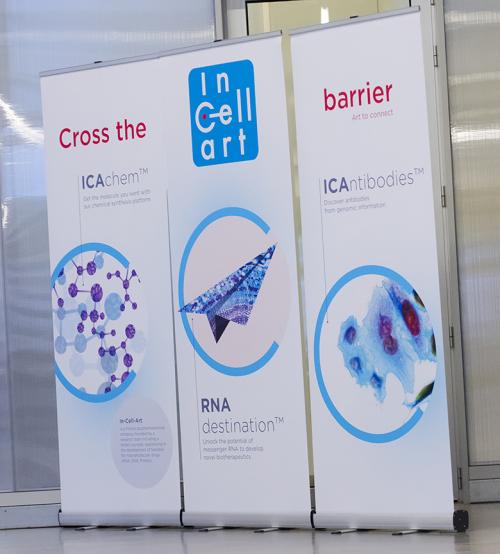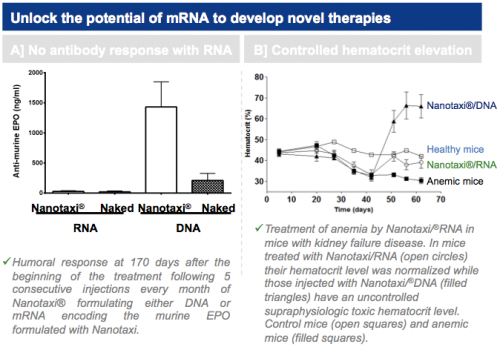Ongoing projects for Nanotaxi® / DNA / RNA Vaccines
In-Cell-Art currently has 16 projects under development at different stages supported by many sponsors and partners :
- 14 on-going Nanotaxi®/DNA vaccines with 4 therapeutic and 10 prophylactic vaccines ;
- 2 on-going Nanotaxi®/RNA vaccines in the infectious diseases field.
The most advanced projects are (i) Hepavac to treat Hepatocellular Carcinoma (the fifth most common cancer worldwide with a survival rate at 5 years of <5%) using Nanotaxi®/DNA vaccination, and (ii) RNArmorvax to develop a vaccination platform against infectious diseases using Nanotaxi®/RNA. These two vaccines are supported by BPI/Pays de Loire Region and DARPA/Sanofi-Pasteur/CureVac. The different Nanotaxis® used for the two vaccines have been produced industrially using a GMP compliant chemical synthesis process.
This success will position In-Cell-Art technology as a reference platform for pharmaceutical firms wishing to develop a novel generation of DNA/RNA vaccines that use breakthrough patented biologically inspired delivery systems injected by conventional methods.

Ongoing projects for Nanotaxi® / RNA Therapeutics
In-Cell-Art performed several proofs of concept demonstrating that Nanotaxi® can deliver messenger RNA inside cells and overcome its limited efficacy by not only dramatically increasing the level of expression but also modulating it to restore physiological condition. This could also help to control protein expression and enable sustained expression compared to bolus injection of recombinant purified proteins that can induce unwanted effects.

In-Cell-Art currently has 4 projects using Nanotaxi®/RNA under development at different stages, all supported by sponsors and partners.
The 4 projects deal with the secretion in the blood of protein from the muscular tissue after injection of Nanotaxi®/RNA formulation. Three of them deal with the production of monoclonal antibodies by the injected muscle, following delivery by a breakthrough direct delivery mechanism into the muscle fibers. This does not elicit any immune response against the expressed protein.
The most advanced project concerns the secretion of EPO by muscle tissue to treat anemia in kidney failure. Nanotaxi® does not produce antibodies against EPO (graph A], right panel). Nanotaxi® allows the normalization of the hematocrit level in a mouse model of kidney failure (graph B], right panel)
The success of protein expression from the injected muscle has already effectively positioned In-Cell-Art as a reference platform for laboratories to develop novel generation RNA therapeutics that use breakthrough biologically inspired delivery systems injected by conventional methods adapted to the route of administration.

